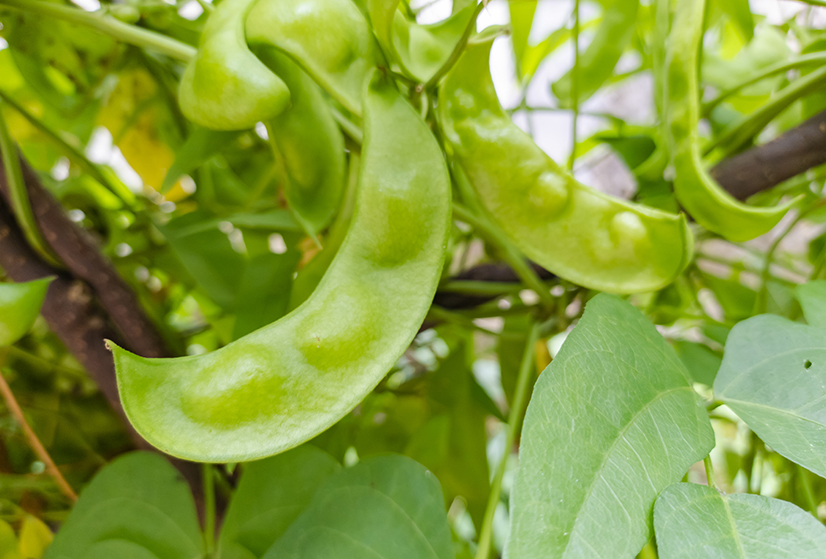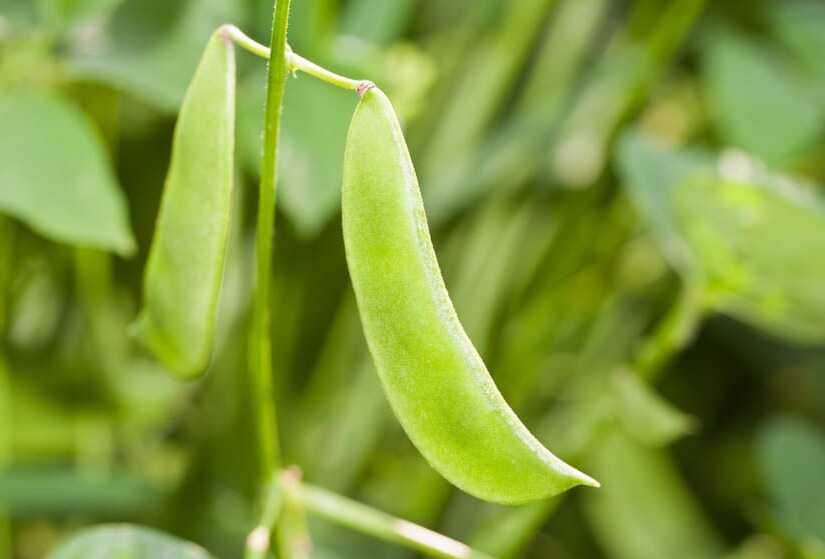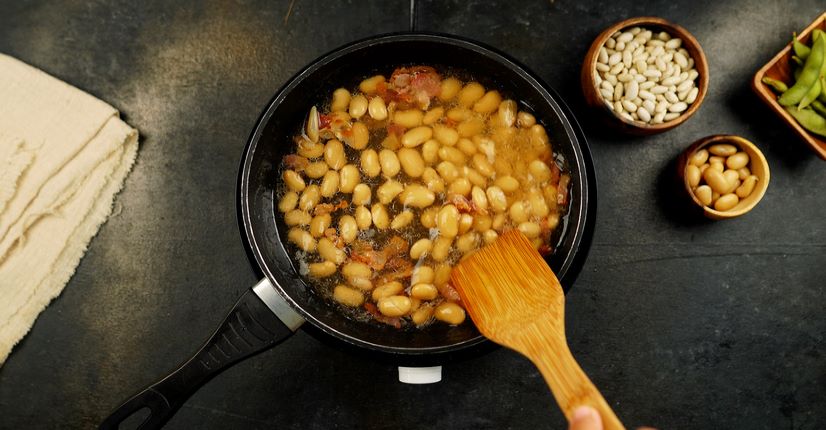
The guide to Grow and Care for Lima beans
Lima beans (Phaseolus lunatus), popularly known as butter beans grow similarly to green beans but take a little longer to mature. Lima beans have the same complex leaves as other beans: triple oval leaflets around 5 to 7 cm long. Blooms are white or yellow and create loose clusters on the shrub. The resultant pods are curled and flatter than regular green bean pods. Lima bean crops are planted in the summer and develop reasonably quickly, maturing in 2 to 3 months depending on the type. To be safe, they must be thoroughly cooked.
Characteristics

Mature Size
60 to 360 cm tall, 30 to 100 cm wide

Sun Exposure
Full sun

Soil Type
Loamy, moist, well-drained

Soil pH
Acidic, neutral (6 to 6.8)

Bloom Time
Summer

veg. color
white or yellow
Environmental Footprint
Varieties and differences
‘Jackson Wonder’ beans are buff in hue with burgundy speckles. They tolerate heat well and mature in around 66 days.
‘Henderson’s Bush’: A tried-and-true cultivar with little white beans. It continues to produce for several weeks and matures in about 65 days.
‘King of the Gardens’: A popular variety produces huge white beans over a lengthy period (around 88 days).
Fertilizer
Legumes, in general, do not require additional fertilizer, particularly if the ground is already rich. However, because certain lima bean types have a somewhat extended growing season, a mid-season side coating of compost or composted manure can be beneficial. These slow-release food sources will help the plants survive the rest of the regular season.
Soil
The soil should drain effectively and be somewhat rich in organic materials. Because lima beans grow strong, broad roots and dislike sitting in damp soil, heavy clay soil might be problematic. The pH of the soil ought to be slightly acidic to normal.
Water
Until germination, keep the soil equally wet but not saturated. Then, ensure that the plants get at least 2 cm of water every week. Mulch all-around roots in hot, dry weather to cool them down and conserve soil moisture. Water the plants more often after they begin to blossom and set pods; if they face drought at this stage, they will remove the flowers/pods.
Light
To obtain the best yield for your lima beans, choose a location that receives at least 6 hours of direct sunshine on most days. In addition to providing light for development, complete sun exposure will maintain the plants dry and less susceptible to fungal diseases.

Humidity and temperature
Lima beans may be fickle when it comes to temperature. They dislike severe temperatures and thrive in conditions that remain between 21and 26 degrees Celsius for several months. They can, however, withstand higher conditions better than prolonged chilly temperatures, but they’re not frost-hardy. As long as appropriate soil moisture is maintained, humidity is usually not a concern.
Harvesting
Understand when your bean species should be ready to harvest, since this might range from 60 to 90 days. Whenever the pod varies in color and the beans within plump up, and before the pod dries, lima beans are prepared to shell. If you wish to dry the beans, keep the pods on the plant till they are dry and brittle, and the beans within are dry and hard.
Unshelled beans can be kept in the fridge for up to a week. Alternatively, shell and blanch the beans before freezing them for up to 3 months. Dry beans could be stored for several years inside a sealed jar in a cold, dry location.
Recipe Description

Butter Lima Beans
Ingredients
- 500g dried lima beans
- 1 smoked ham hock
- 1 1/2 tablespoons salt and 1/2 teaspoon black pepper
- 1 1/2 tablespoons salt 1/2 teaspoon black pepper

Servings
8 to 10 people

Prepping time
10 min

Cooking time
1 hour
- Rinse the beans to remove any foreign particles.
- Place the beans in a large saucepan or oven. Combine the ham hock, liquid water, and salt in a mixing bowl.
- Bring to a boil, then lower to low heat and simmer for around 20 minutes.
- Reduce the heat to a low simmer, cover securely, and continue for 1 1/2 to 2 hours, just until the beans are cooked.
- Add just enough water to cover the beans. Stir less often to keep the beans intact, or more frequently to get a thick, rich soup.
- For further information, please visit the blog article.
- Season with pepper and salt to taste.
- Pull out the hock, shred the meat, and return it to the pot if desired.
Order Plant Food in our Shop!
Shop NowFAQ
Can lima beans reappear every year?
How much do lima beans take to grow?
Most lima bean types are fully ripe in 2 to 3 months.






